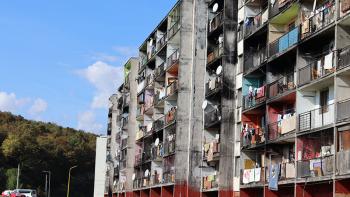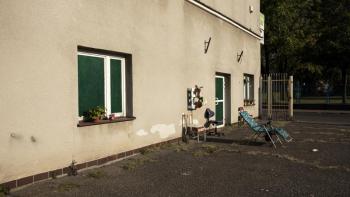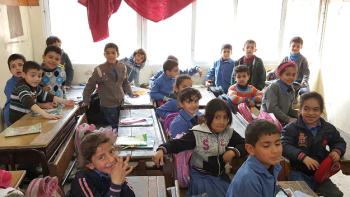Quick Facts
- When the program started: 2004
- Highlights: Whirlpool corporate team worked on the build in Moldava and Bodvou in 2009
- Families served: More than 1,000
Other facts:
- Population: 5.5 million
Find more country facts on: CIA The World Factbook – Slovakia
Habitat for Humanity in Slovakia
Since 2004, Habitat for Humanity has been working in Slovakia in partnership with a local nonprofit organization, Environmental Training Project (ETP) Slovakia. At first, it was providing small home-improvement loans for a Roma community in the east of the country. Later, Habitat activities expanded to several towns and villages in the same region.
The housing need in Slovakia
According to the official data, the Roma minority constitutes about 2 percent of the population in Slovakia. Unofficial estimates put this number much higher. One of the most visible manifestations of general poverty the Roma suffer is their substandard housing conditions. Most Roma settlements have no access to clean drinking water and proper sewage systems. Adults and children often live in one-room shacks and share just one bed. Roma settlements are mainly located in the east of the country, which is the least economically developed region and has a much higher unemployment rate.
In rural areas of Slovakia, many homes are not properly insulated and protected from harsh winter conditions. Low-income families cannot afford to renovate their homes and install proper windows and doors. They are forced to pay lavish sums for heat, as prices for utilities have risen sharply. At the same time, they cannot obtain loans from commercial banks, as they are deemed unreliable clients.
How Habitat addresses the need
Habitat, in cooperation with a local nonprofit organization, is providing small, affordable housing loans to allow members of the Roma community to upgrade their homes. It is also providing low-income families with financial education courses that help them manage their income and loans more effectively.
Here are some examples of Habitat projects in Slovakia:
- Microloans for home improvements
In cooperation with ETP Slovakia, Habitat is offering low-income families small loans for home improvements as well as construction advice on properly insulating homes, thus keeping heat in winter while cutting energy consumption. Partner families use loans to replace old wooden doors and windows, or to install proper flooring. Families receive construction training and supervision during such reconstruction projects. - Financial education
In partnership with the Citi Foundation, Habitat for Humanity is providing financial education trainings to new, potential or existing Habitat homeowners who, through the training, gain the skills and tools needed to become more financially literate and capable. By attending FE workshops designed to teach credit, savings, and money management the families are better prepared to gain access to and manage microfinance loan products for housing and microenterprise and to manage their financial assets more effectively.
Meet a Habitat family
Helena Hudakova, her daughter Judita and three grandchildren used to live in a truck on the streets of Moldava nad Bodvou, in eastern Slovakia. They were happy for this roof above their heads.
When her husband was alive and taking care of the family, Helena used to have a cozy two-bedroom apartment with central heating.
The widow had to move into a smaller apartment, hoping to save on utilities. Within a couple of years, she changed apartments numerous times, each time choosing smaller and smaller spaces, but she could not outrace the bills. Finally, the family was evicted. For months they lived on the streets, until a charity offered them an old AVIA truck. Now, with the help of Habitat for Humanity, Judita and Helena have moved from the truck into a simple, decent home.


